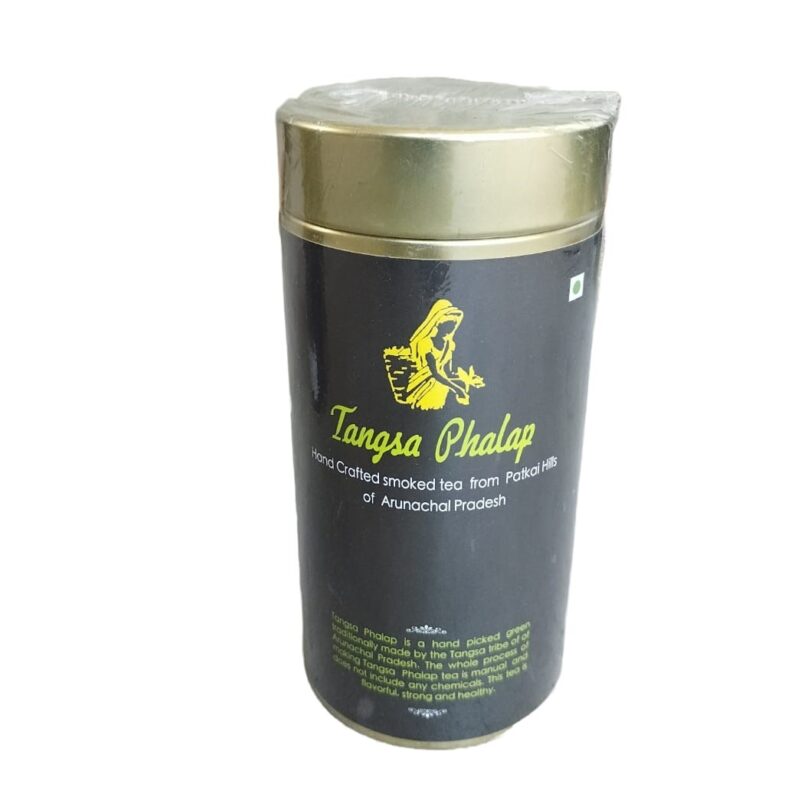Tangsa tribe a habitat of Changlang district in Arunachal Pradesh, India is self sustainble community. Besides many daily used localy made items they also grow turmeric, cardamon(large) and process tea for their own consumptions. The unique handmade tea is famous for its aroma and taste. It comes with a long list of health benifits.
Like modern ear tea plantations, the traditional way of preparing Tangsa Phalap is also a meticulous step and has its special smoky flavour, distinct from day to day tea used in the households. The tea leaves are processed using traditional methods and put away in hollow bamboos and are placed on a dhuwa chang (shelves above the cooking pit) for preservation. In fact the tea can be preserved for a century and much like wine it ages beautifully.

The plucking seasons of the tea leaves starts from April – May and extends up to September-October.
In the traditional set up the , the tea plants are not pruned, but are grown like trees and leaves are plucked using ladders.
The picked leaves are then sprinkled with water although the tea leaves have their own natural in built moisture and are placed in large wok.
They are then boiled without adding water in a fire place using large logs until it is half boiled or until it turns slight yellow.
The half boiled tea leaves are taken out of the wok and placed in a large sieve made of bamboo and are placed on top of the fire place for dying.
The traditional dryers are bamboo rack placed horizontally one above the other above the fire.
After half boiled tea leaves are placed in the bamboo rack, it is let to dry for a day and on the next day the bamboo racks are shifted, the lowest bamboo rack is shifted to the top , until all the bamboo racks are dried for a day on the fire.
Once the tea leaves are dried , they are slightly crumbled using one’s hand and then sieved through a bamboo made sieve called phey in local language. The particles of the dried tea leaves that are sieved through phey are collected in a vessel and kept aside.
The sieved tea leaves are then pour inside a hollow bamboo measuring 15 inch or so in length and then heated on fire to take out the moisture of bamboo. They dried leaves and moisture are mixed and mashed using long khattu( a traditional long pestle made of wood).
The same procedure is followed until the bamboo is filled up. Thereafter, the filled up bamboo is skinned upto its inner patch and covered the mouth with banana leave and finally sealed & tied with a rope made of bamboo called wakhao.
Arete, The parent company of Iris ,working with R K Mossang Memorial Society to promote indegineous Tangsa Phalap(tea) Globally.
